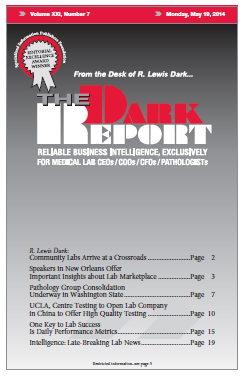CEO SUMMARY: Every clinical lab today must deal with the twin challenges of performing an increased volume of tests while being paid less money. That’s why a handful of innovative lab organizations now use management information systems with analytics that provide detailed, real-time metrics on all aspects of their lab’s business and operations. Instead of …
One Key to Lab Success Is Daily Performance Metrics Read More »
To access this post, you must purchase The Dark Report.


